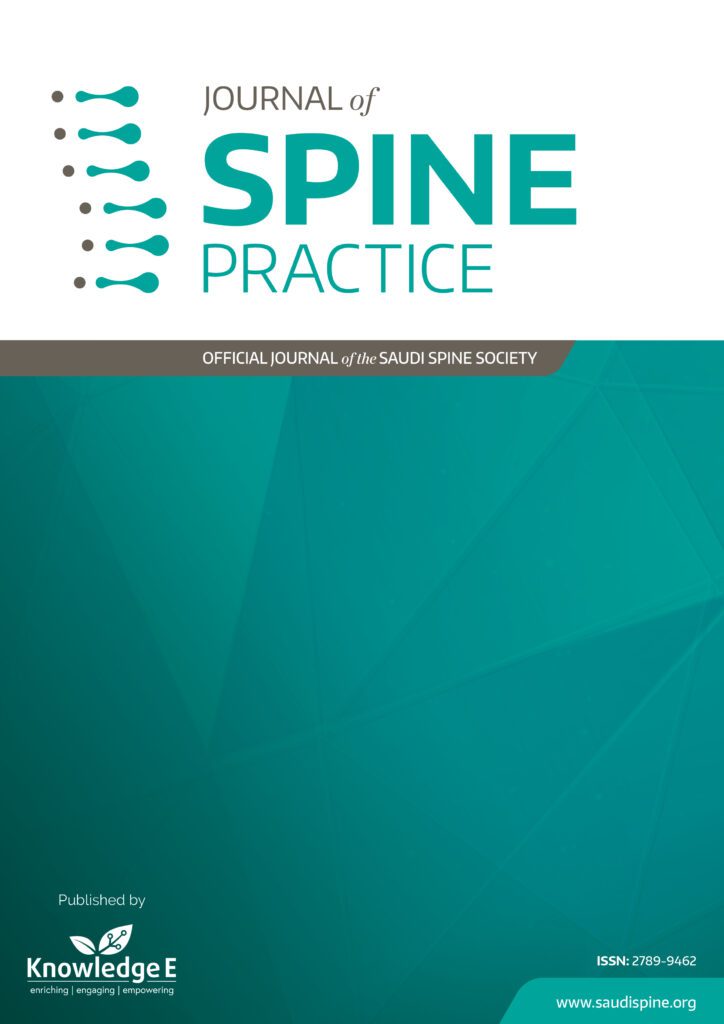
Journal of Spine Practice
ISSN: 2789-9462
Leading research in all spine subspecialties focusing on orthopaedic spine, neurosurgery, radiology, and pain management.
Epidemiology of Spinal Cord Injuries and Their Outcomes: A Study at King Khalid Hospital (KKH), Najran, Saudi Arabia, June 2018–June 2019
Published date: Nov 07 2021
Journal Title: Journal of Spine Practice
Issue title: Journal of Spine Practice (JSP): Volume 1, Issue 1
Pages: 30
Authors:
Abstract:
Introduction: Spinal cord injury (SCI) is a life-changing neurological injury that puts a significant load on the healthcare system. SCI can be caused by several reasons such as road traffic accident (RTA), motor traffic accident (MTA), fall, gunshots, or bomb blast. There is not much national data concerning the etiology of SCI in Saudi Arabia. Therefore, we conducted this study to quantify the number of SCI incidence at King Khalid Hospital (KKH), Najran between June 2018 and June 2019. The study aimed at reviewing the rate and epidemiology of SCI at KKH for all patients admitted to the hospital during the study period and examining the causes of SCI for suggesting prevention strategies.
Methodology: This retrospective study included all patients with SCI admitted to KKH during the mentioned period. Several factors for each patient were recorded including their age, gender, nationality, cause of SCI, and the outcomes of neurological injury.
Result: In total, 182 SCI patients were admitted during the study period: 53% of them were male, and those aged 16–30 years were most vulnerable to SCI. RTA was the most common cause of SCI for males (59%), followed by bomb blasts (15%). While fall was ranked as the second cause of SCI in males (15.4%), it was the main reason for SCI in females 13%, followed by RTA. The majority of admitted cases in younger age was stable and improved, however, after RTA four patients had quadriplegia and six cases had paraplegia.
Conclusion: RTA is the most common cause of SCI followed by fall and bomb blast. Younger patients are more likely to improve after SCI compared to elderly patients.
References: